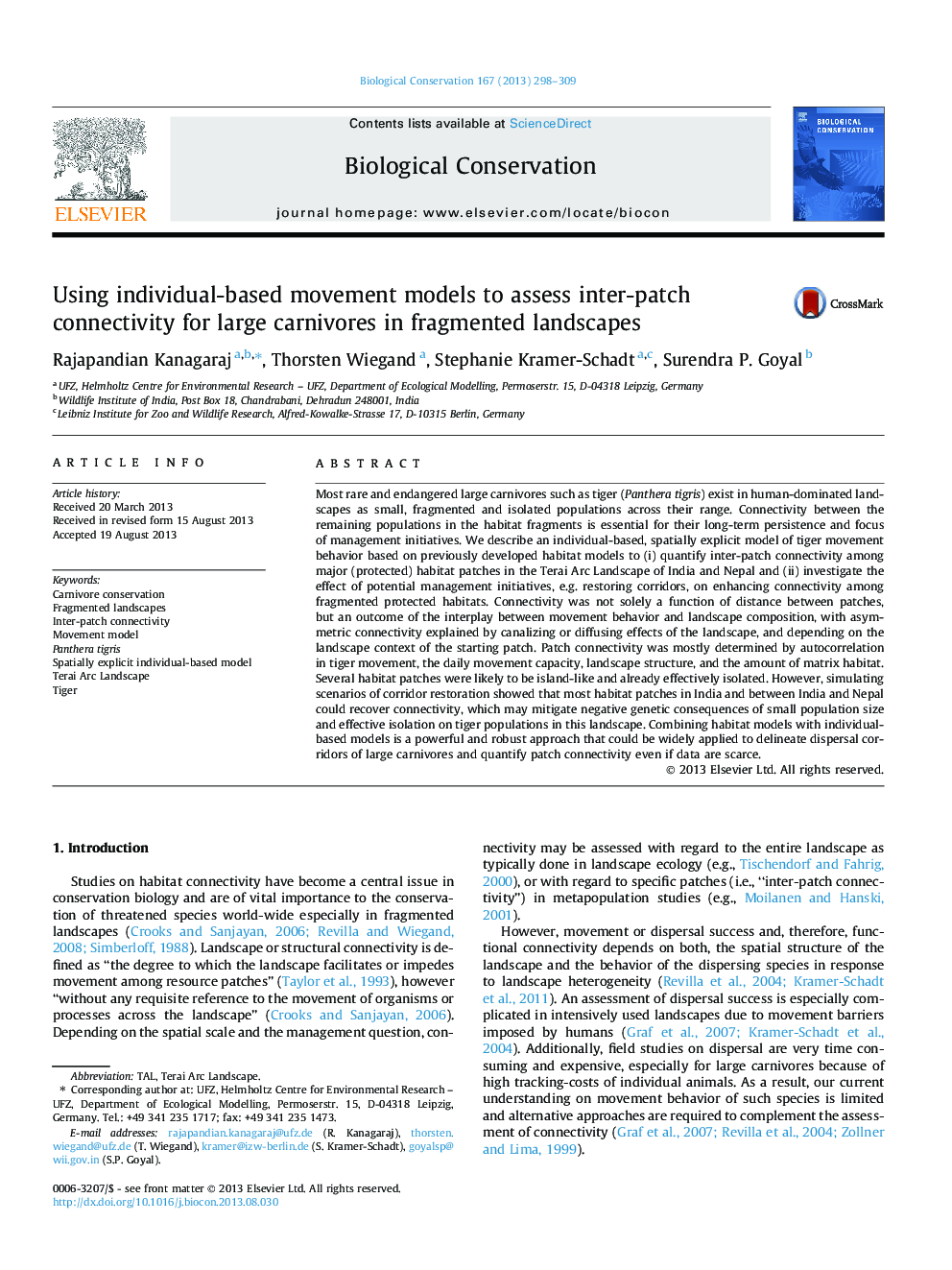| کد مقاله | کد نشریه | سال انتشار | مقاله انگلیسی | نسخه تمام متن |
|---|---|---|---|---|
| 6300638 | 1617934 | 2013 | 12 صفحه PDF | دانلود رایگان |
عنوان انگلیسی مقاله ISI
Using individual-based movement models to assess inter-patch connectivity for large carnivores in fragmented landscapes
ترجمه فارسی عنوان
با استفاده از مدل های حرکتی مبتنی بر فرد برای ارزیابی اتصال بین پچ برای گوشتخواران بزرگ در مناظر تقسیم شده
دانلود مقاله + سفارش ترجمه
دانلود مقاله ISI انگلیسی
رایگان برای ایرانیان
کلمات کلیدی
موضوعات مرتبط
علوم زیستی و بیوفناوری
علوم کشاورزی و بیولوژیک
بوم شناسی، تکامل، رفتار و سامانه شناسی
چکیده انگلیسی
Most rare and endangered large carnivores such as tiger (Panthera tigris) exist in human-dominated landscapes as small, fragmented and isolated populations across their range. Connectivity between the remaining populations in the habitat fragments is essential for their long-term persistence and focus of management initiatives. We describe an individual-based, spatially explicit model of tiger movement behavior based on previously developed habitat models to (i) quantify inter-patch connectivity among major (protected) habitat patches in the Terai Arc Landscape of India and Nepal and (ii) investigate the effect of potential management initiatives, e.g. restoring corridors, on enhancing connectivity among fragmented protected habitats. Connectivity was not solely a function of distance between patches, but an outcome of the interplay between movement behavior and landscape composition, with asymmetric connectivity explained by canalizing or diffusing effects of the landscape, and depending on the landscape context of the starting patch. Patch connectivity was mostly determined by autocorrelation in tiger movement, the daily movement capacity, landscape structure, and the amount of matrix habitat. Several habitat patches were likely to be island-like and already effectively isolated. However, simulating scenarios of corridor restoration showed that most habitat patches in India and between India and Nepal could recover connectivity, which may mitigate negative genetic consequences of small population size and effective isolation on tiger populations in this landscape. Combining habitat models with individual-based models is a powerful and robust approach that could be widely applied to delineate dispersal corridors of large carnivores and quantify patch connectivity even if data are scarce.
ناشر
Database: Elsevier - ScienceDirect (ساینس دایرکت)
Journal: Biological Conservation - Volume 167, November 2013, Pages 298-309
Journal: Biological Conservation - Volume 167, November 2013, Pages 298-309
نویسندگان
Rajapandian Kanagaraj, Thorsten Wiegand, Stephanie Kramer-Schadt, Surendra P. Goyal,
